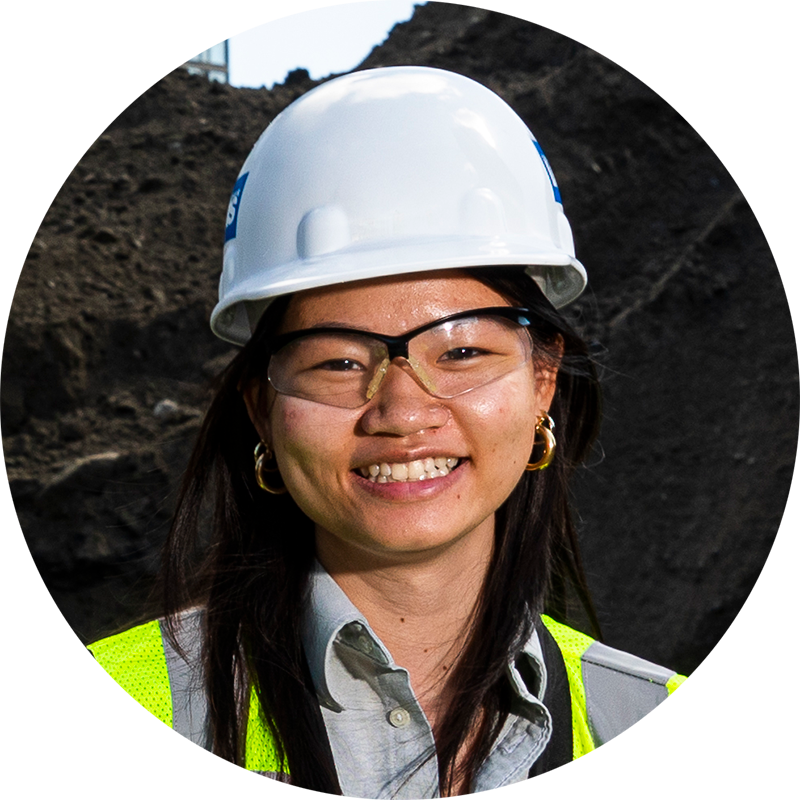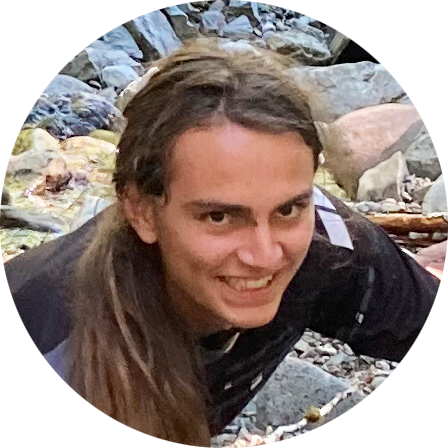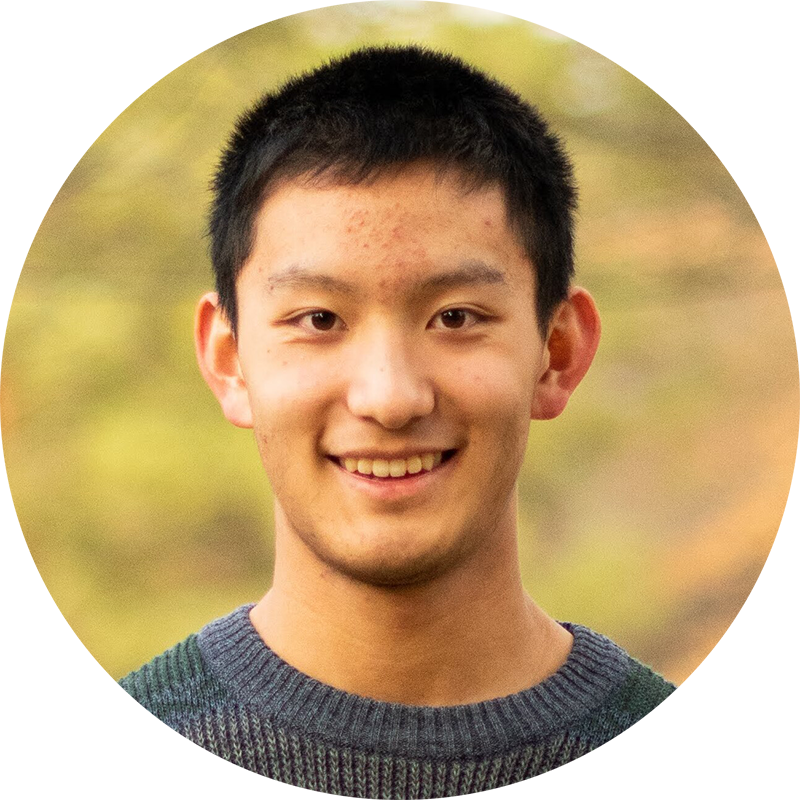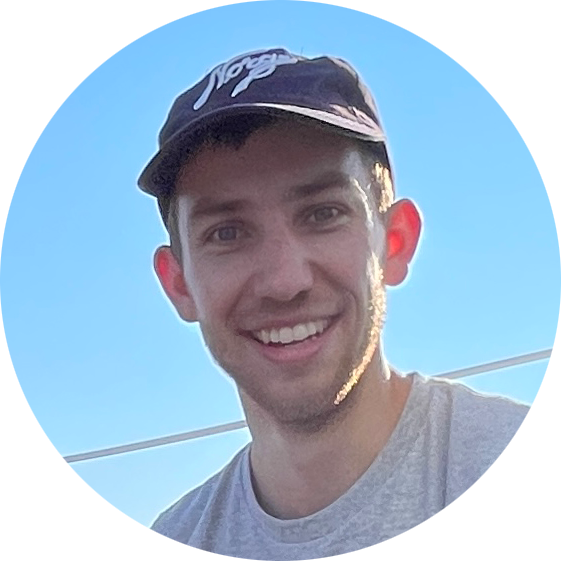Investing in internships
By: Brooke Fisher
Top image: During a summer internship, Nancy Le made daily visits to the construction site for the Chapter Building 1, located in the U District.
When it comes to gaining hands-on work experience, investing in internships always pays off.
Every summer, Civil & Environmental Engineering students head out into the real-world to gain experience, from learning technical skills to solving new challenges to making connections in the field. This past year, 74% of juniors had summer internships, of which 54% were from the construction profession.
Four students — three undergraduates and one master’s student — share what their summer internship experience was like this past summer. From working in Alaska with the U.S. Forest Service to assisting project engineers at a construction site in the University District to helping implement electric vehicles and improving traffic intersections, CEE students collectively gained a wide variety of experience.
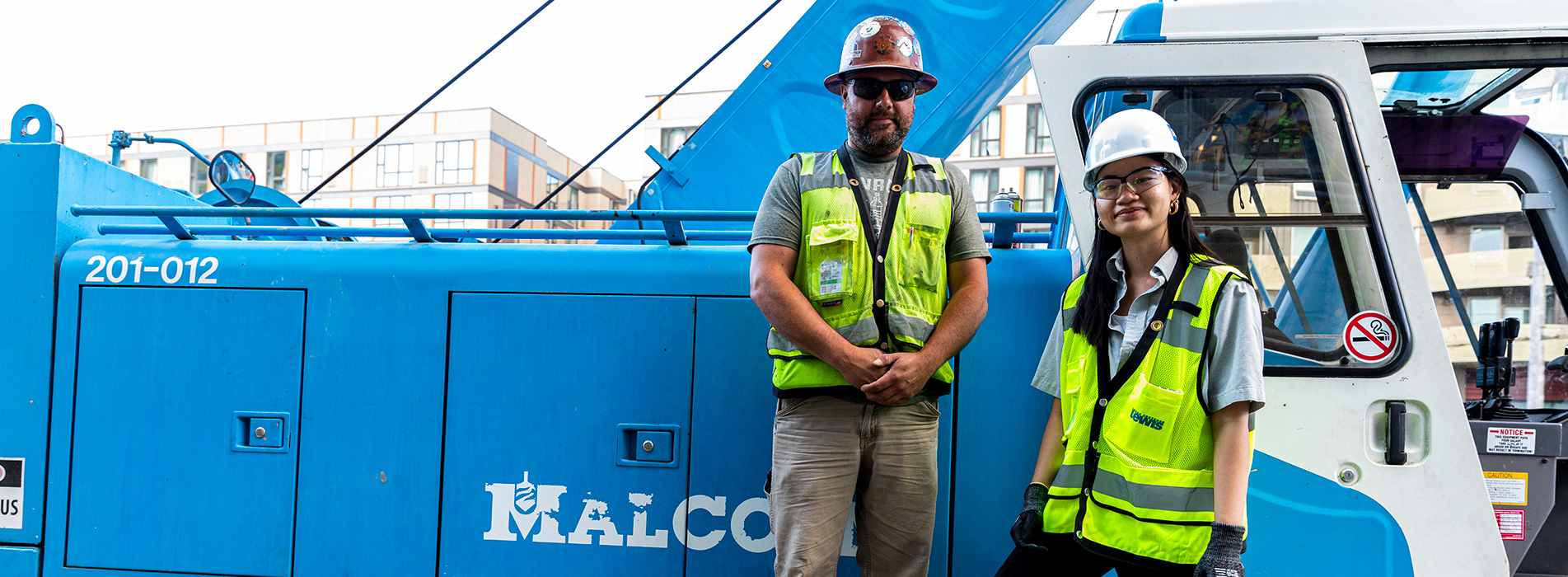
Nancy Le stands in front of a mobile crane at the construction site. Although she did not operate the machinery, learning how they work is a valuable part of a construction internship. Photos by Mark Stone/ UW Photography.
Name: Nancy Le
Year in school: Junior (Class of 2024)
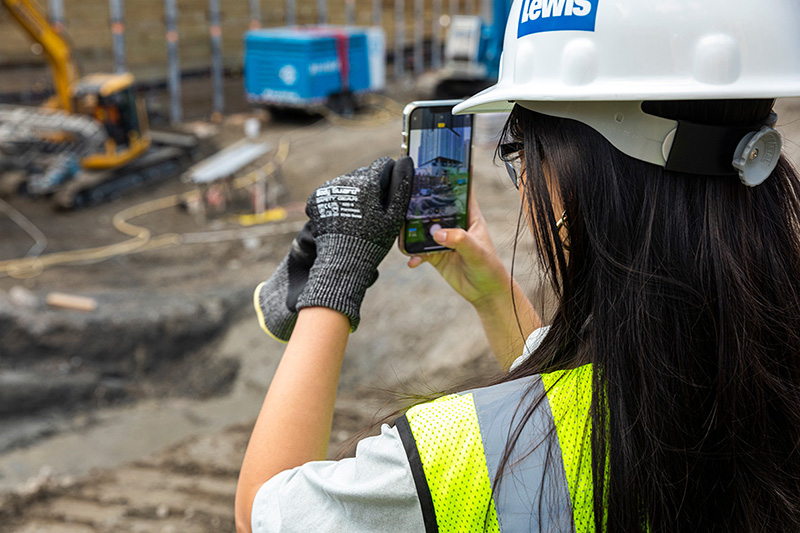
During a site visit, Nancy Le takes a photo of the installation of lagging, which is a structural material that is used to fill in the space between the steel piles. The photos are used for monthly progress reports that Nancy helps write and send to the project owners.
Where did you intern this past summer? Were you based in Seattle or elsewhere?
This summer, I interned at Lease Crutcher Lewis, a general contractor based in Seattle, WA and Portland, OR.
How did you find out about the internship opportunity?
I found out about this internship opportunity by talking to an older student from the two-year program that I was a part of earlier in my undergraduate experience, the Washington State Academic RedShirt (STARS) program. I then researched the company, attended a construction management virtual mixer that Lewis was hosting, and reached out to a project engineer (PE) at Lewis to learn more about their experience at the company. I then finally reached out to Lewis’ careers contact to express my interest in an internship.
Was this your first internship? How long was it?
This was my first in-person internship! Originally, my internship was for three months long, but Lewis was flexible and shortened my experience to 10 weeks in order for me to start my study abroad program – Engineering Rome!
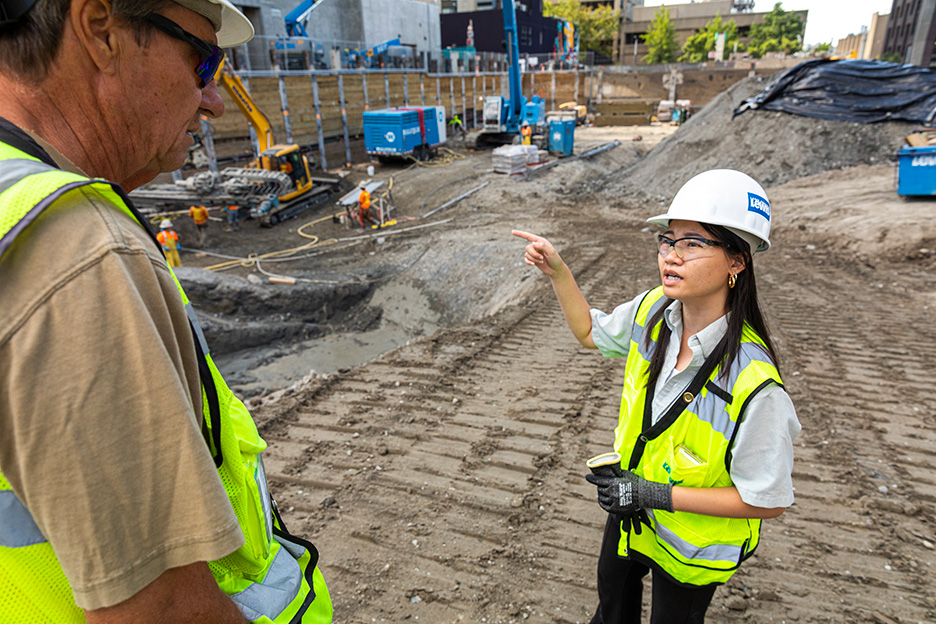
Nancy Le asks the site safety coordinator a question about ladder safety. One reason she visits the site is to make safety observations, in order to help maintain a safe working environment.
Were you working in an office or field or both?
Depending on the day and how much I needed to get done, I’d spend between 15-30 minutes in the field each day, and the rest in the office. There were multiple interns this summer and about once every week we would schedule site walks and visit each other’s sites.
What types of projects did you work on during your internship?
The project that I was placed on is called Chapter Building 1, a commercial 12-story high rise building located in our very own U District, on 11th and 45th streets.
Read more
What types of things did you learn?
Through my internship, not only did I gain the technical experience of a project engineer (writing requests for information (RFIs), submitting submittals, using Bluebeam construction software, navigating specifications and drawings, and communicating with subcontractors), but I also learned how the construction process and the construction industry operates as a whole. Interns interact with many, many different types of people. For me personally, my most valuable learning experiences happened when I was out in the field asking questions to my PEs, project manager and the crew on-site.
What did you enjoy most about the experience?
My supervisors, the project engineers! As a whole, I felt very supported, respected and learned a lot from their guidance. Our tenant improvement PE taught me a lot about PE 101, our enclosure PE gave me really fun tasks and would be the one to take me out on site each day, and our Mechanical Electrical Plumbing Fire Protection PE was a woman and provided me with a lot of comfort and reassurance when I had doubts about fitting in in construction. Super grateful to have met them!
Do you feel better prepared for your future career?
Yes! This internship has been a great learning experience. I feel especially grateful that I was able to intern before my junior year, as it allows me to be more reflective and intentional about what I now know I like, what I don’t like, and how I can do more exploring this school year.
How did you first become interested in engineering?
Growing up in Vietnam, I was always drawn to buildings as I was constantly surrounded by construction in my neighborhood. I also really enjoyed math and physics and was encouraged to pursue engineering by a volunteer at a community center I used to attend. Combining these thoughts together and my interest in working on physical, large-scale projects, I decided to pursue civil engineering!
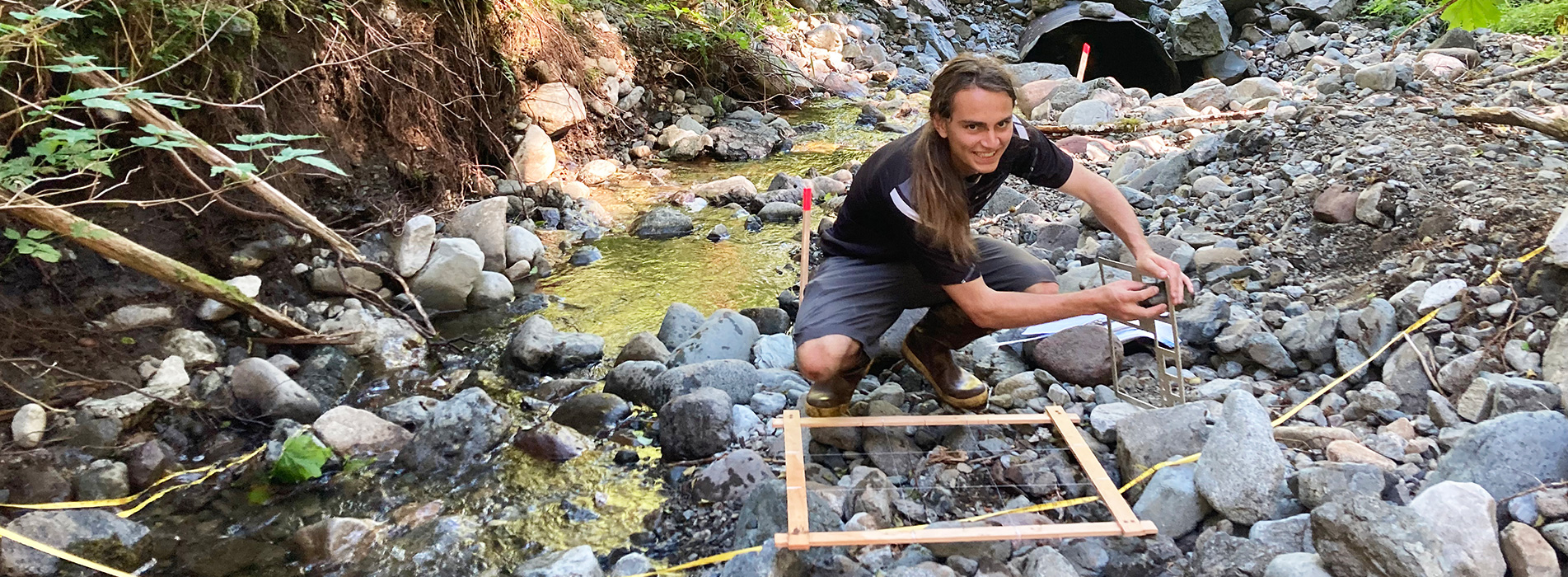
In the Staney Creek area of Prince of Wales Island, Matthew Bonner conducts a systematic, random pebble count of Aha Creek to determine the creek’s distribution of stream bed particle sizes. The project helped inform the design of an aquatic organism passageway, to better allow aquatic organisms to move upstream and downstream. Photos provided by Matthew Bonner.
Name: Matthew Bonner
Year in school: Junior (Class of 2024)
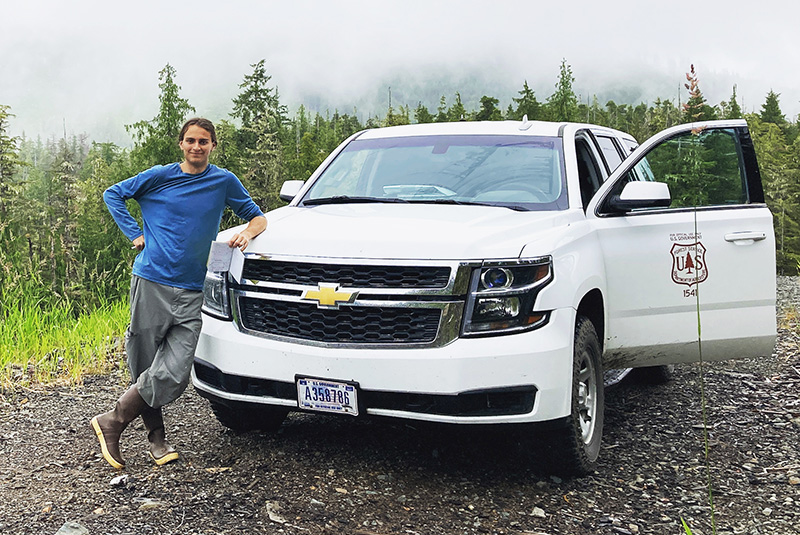
During a summer internship with the U.S. Forest Service, Matthew Bonner enjoys a foggy day in the Polk Inlet area of Prince of Wales Island.
Where did you intern this past summer? Were you based in Seattle or elsewhere?
I interned with Tongass National Forest in the town of Thorne Bay, Alaska. Thorne Bay is located on the eastern side of Prince of Wales Island, an island in the southern portion of the Alexander Archipelago, which is a group of more than 1,000 islands. The island is the fourth largest island in the United States. For comparison, it is a little larger than the state of Delaware. The Alexander Archipelago and the rugged, ice-capped Coast Mountains of the mainland constitute the panhandle of Alaska that extends toward the lower 48 states. Alaska is a pretty large place with a lot of varied climates and landscapes. Keeping warm and dry in the field was imperative, so a standard field outfit on the job was fishing boots, rain pants, a rain jacket and a hat.
How did you find out about this internship opportunity?
I glimpsed an ad for U.S. Forest Service internships on Instagram. Once I made it to the USAJobs.gov listing for the Forest Service internships, I noticed that the Tongass was looking for interns. After researching the Tongass a little, I thought the work there relating to aquatic organism passageways (AOPs) looked like an interesting way to get my feet wet in hydrology (no pun intended!).
Was this your first internship? How long was it?
This was my first internship. It was a little less than three months long. I worked from June 21 to September 9.
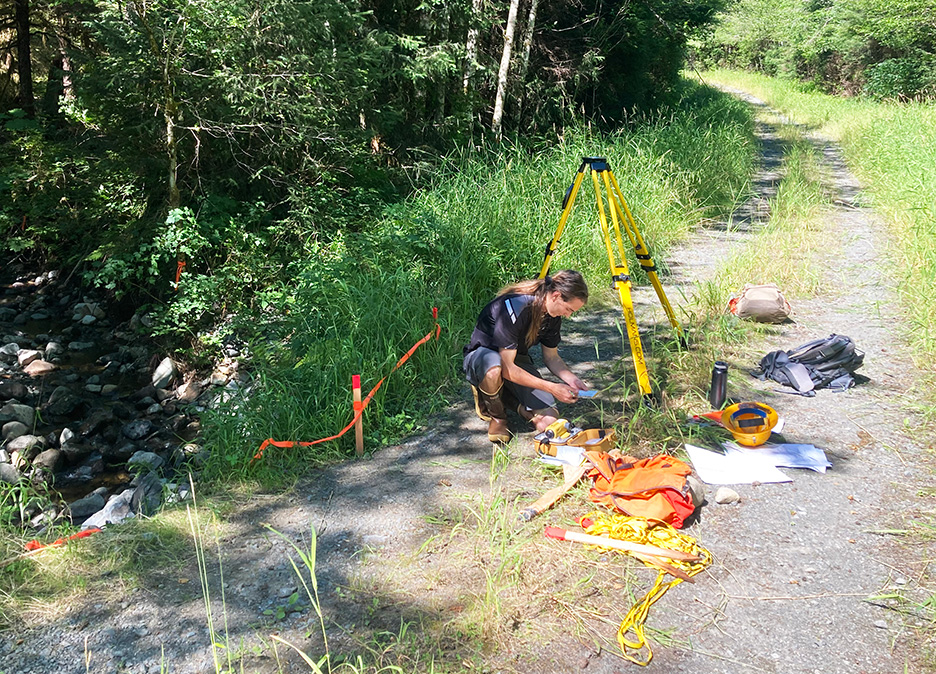
In the Staney Creek area of Prince of Wales Island, Matthew Bonner makes some quick calculations to measure the slope of a stream, which he will compare with prior measurements.
Were you working in an office or field or both?
My work mostly revolved around the field. Twenty percent of my time was spent in the office, but this time was used to log and/or analyze field data.
What types of projects did you work on during your internship?
My internship consisted of three phases of work. During my first month on the job, I performed a sign inventory of the island’s roads in order to become familiar with the layout of the road system. My field partner, Henry, and I then spearheaded the reevaluation of an AOP design on Aha Creek that was shelved in 2018. The AOP design was identified for reevaluation because Forest Service engineers suspected that a recent 1,000-year storm had significantly altered the composition of the natural stream bed upstream of the AOP site and wanted to determine whether the design needed alteration. Specifically, I worked to figure out how the stability of the particles in the stream bed had changed over time. In my last few weeks on Prince of Wales Island, I surveyed the island’s forest service road system for deferred maintenance, and I also occasionally helped geologists catalogue caves. In the northern end of the island, naturally acidic water has carved some of North America’s most spectacular caves out of the limestone bedrock.
Read more
What types of things did you learn?
During my internship, I gained a variety of technical and experiential skills. Overall, learning from my mentors was one of the best parts of my internship. They taught me about different types of road maintenance needs, how to spot maintenance issues in the field and how to prioritize funding for repairs. I was also able to learn many technical skills and a lot of scientific theory as my field partner and I reassessed the Aha Creek AOP. To get up to speed on the technical knowledge and theoretical background I needed, the project began with hours of research. Then, I had to learn a variety of practical skills to establish Aha Creek’s pebble gradient and cross-sectional profile in the field. Overall, the assessment has given me the confidence to approach large, unfamiliar problems in a systematic and productive way.
What did you enjoy most about the experience?
The single most rewarding moment during my internship was when I finished analyzing the data I collected for the Aha Creek AOP reassessment. I remember punching in the last calculations into my excel spreadsheet. With everything done, I sat there at my desk looking once, twice, and a third time at the seven or eight critical results that I had derived from my data. Suddenly, everything was pure magic and I was able put the data together to describe the evolution of Aha Creek’s stream bed stability. I also enjoyed the interdisciplinary nature of the agency. I worked next to engineers, fish biologists, hydrologists, geologists, botanists and archeologists. In a place as rural as Thorne Bay, your co-workers are also your neighbors and friends. I couldn’t have asked for a better work family than the one I had.
Do you feel better prepared for your future career?
I feel much more prepared for my future career. Working with the engineers of Tongass National Forest allowed me to learn a variety of technical, communication, and day-to-day engineering skills that can not be learned in a classroom. Some skills and information require real-life experience to be properly learned, and I had plenty of real-life experience this summer.
How did you first become interested in engineering?
My interest in engineering is partially a result of my passion for tinkering. Ever since I was a child, I have been scheming up something. Initially, this manifested in building palatial LEGO worlds and helping my dad fix ancient cars. By high school, I was working as a bike mechanic. In college, I love building rainwater-fed irrigation systems by hand for homes throughout Seattle. My passion for nature shaped my path toward engineering just as much. In childhood, my favorite memories were either of hikes in the Appalachian Mountains of Northern Georgia or of time spent relaxing in the prairies and mossy forests of my home state, Wisconsin. As I learned to love every tree, bee, mountain, and river I came across, I quickly wanted to know more about why those trees, bees, mountains, and rivers were the way they were. Before long, classes in physics, ecology, chemistry, geology and botany were my favorite.
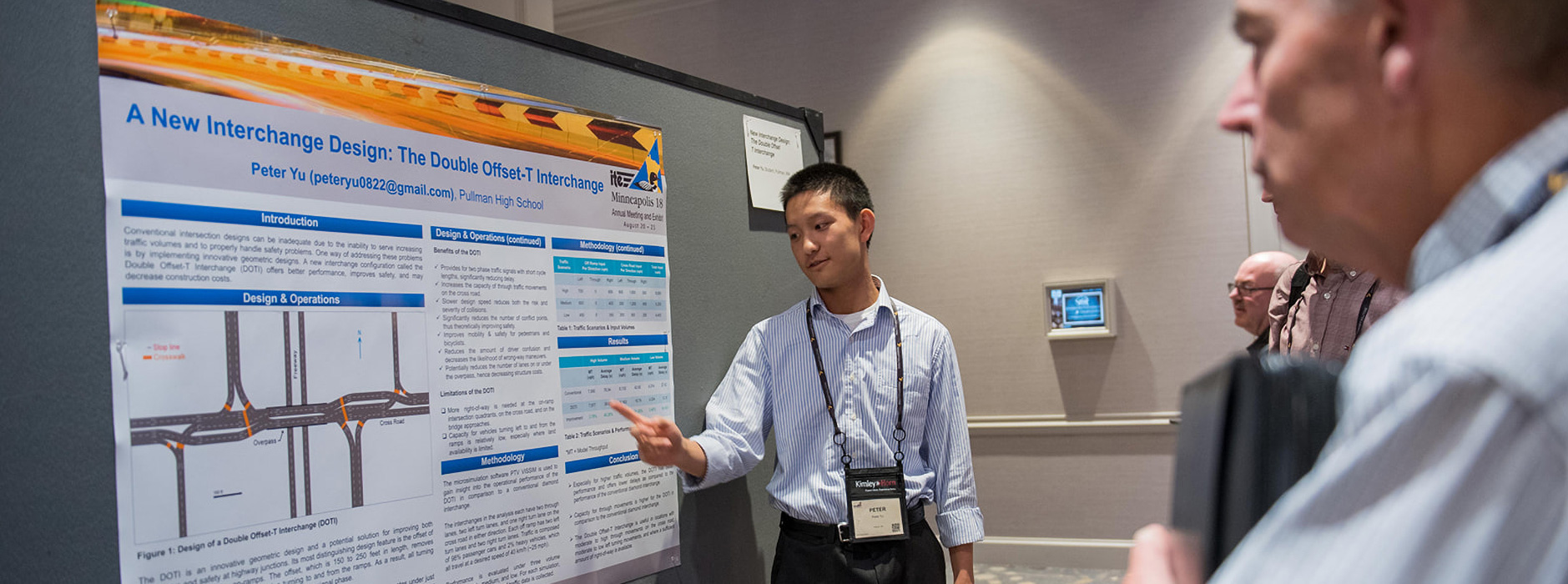
Photos provided by Peter Yu.
Name: Peter Yu
Year in school: Junior (Class of 2024)
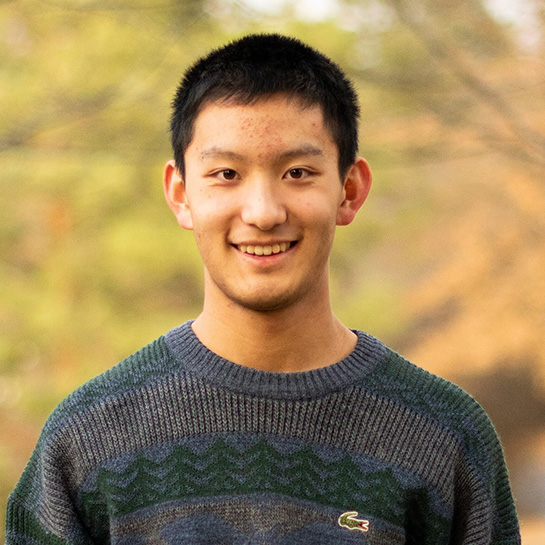
Where did you intern this past summer? Were you based in Seattle or elsewhere?
I interned at DKS Associates, a national transportation engineering and planning consulting firm — in the Seattle office.
How did you find out about this internship opportunity?
I was introduced to this internship opportunity by a Seattle-based DKS employee whom I had interacted with at the Transportation Research Board (TRB) 101st Annual Meeting in Washington, D.C. in January 2022.
Was this your first internship? How long was it?
The previous summer, I interned full-time at Kittelson & Associates, Inc., a national transportation engineering, planning and research consulting firm. My full-time internship this summer lasted about three months, from mid-June to mid-September. I will continue my internship with the Seattle office part-time during the school year.
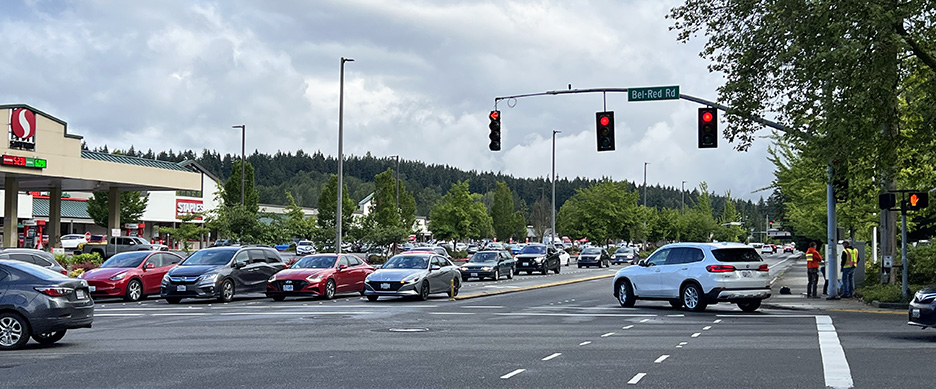
During a summer internship, Peter Yu studied one of the signal poles to be replaced at the busy 140th Ave NE & Bel-Red Road intersection in Bellevue, WA.
Were you working in an office or field or both?
I mainly spent my time working on projects in the office, although I did go to Bellevue for a project field visit. I visited a busy signalized intersection in Bellevue, where I had lots of fun seeing the inner workings of a traffic signal.
What types of projects did you work on during your internship?
During my internship, I conducted macroscopic operational analyses as part of an Intersection Control Evaluation (ICE) for an existing stop-controlled diamond interchange in Sequim, WA. Macroscopic means studying the traffic stream and analyzing the relationships between flow, speed and density. As part of the project, which entailed assessing alternative interchange designs, I analyzed traffic operations for morning, mid-day and evening peak hours for the existing and expected design life of improvements for three alternatives: no-build, a signalized diamond interchange, and a double roundabout interchange. I also worked on several traffic signal design and operations projects, in addition to intelligent transportation systems (ITS) projects for the cities of SeaTac and Issaquah, WA.
Read more
What types of things did you learn?
I gained many valuable technical and professional skills from my internship. For example, I learned the fundamentals of traffic signal wiring and conduit design and how to use the software Sidra Intersection to analyze the operational performance of roundabouts. In addition, I improved my consulting skills and client interaction skills through my project work.
What did you enjoy most about the experience?
I enjoyed the ability to work on and make meaningful contributions to projects in my areas of interest. I was excited to be an important part of several traffic design and operations projects and gain valuable insights from them. Furthermore, I enjoyed networking and interacting with the many excellent individuals around the firm.
Do you feel better prepared for your future career?
I have gained many useful technical and professional skills from my internship at DKS Associates. I have also gained many valuable insights and experiences from my project work at DKS. These skills will unquestionably help me in my future career.
How did you first become interested in engineering?
Growing up, I was always very interested in highways and traffic. I recall spending a lot of time playing with toy cars and traffic control devices when I was just a few years old. However, I did not think of my interests as a potential career path until my sophomore year of high school, when I became very interested and involved in engineering (it’s a long story) and knew for sure exactly which field I wanted to go into. Intersection and interchange planning, design, and operations is one of my favorite areas of transportation engineering.
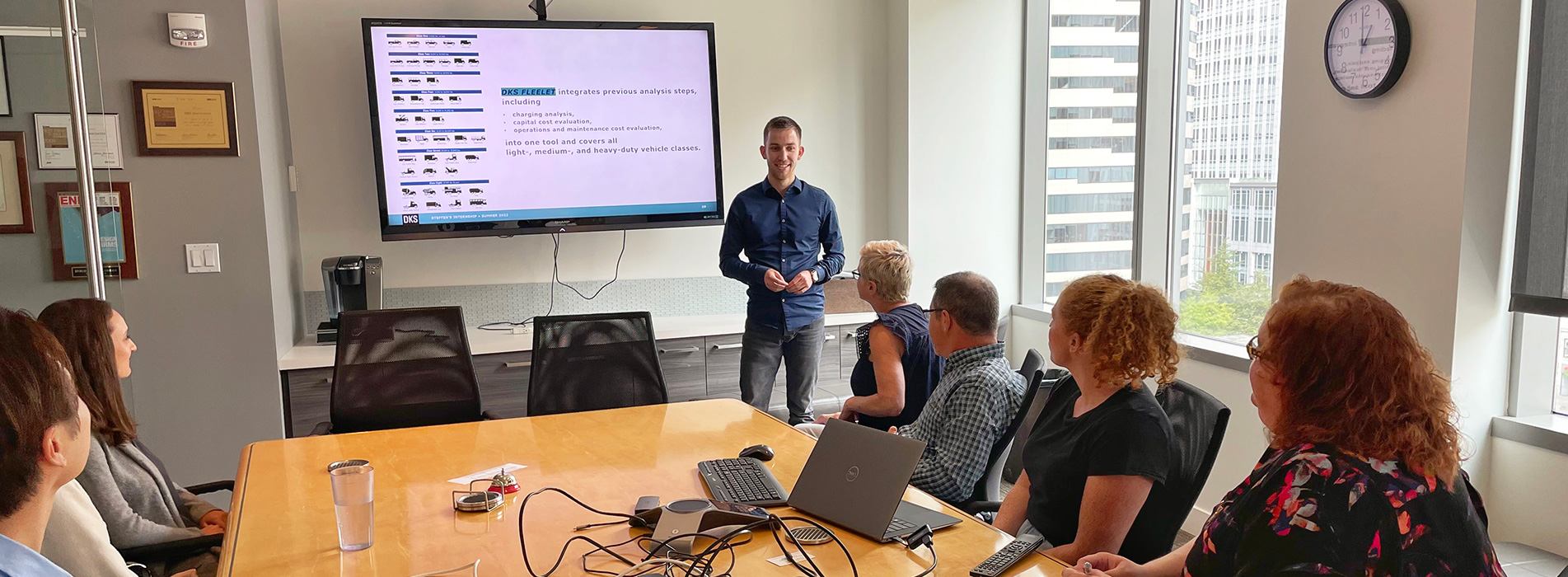
At the end of his summer internship, master’s student Steffen Coenen delivers a wrap-up presentation to people in the DKS Associate Seattle office. In addition, he gave a short virtual presentation on some of his work to the company’s other offices. Photos provided by Steffen Coenen.
Name: Steffen Coenen
Second-year master’s student in transportation engineering (Class of 2023)
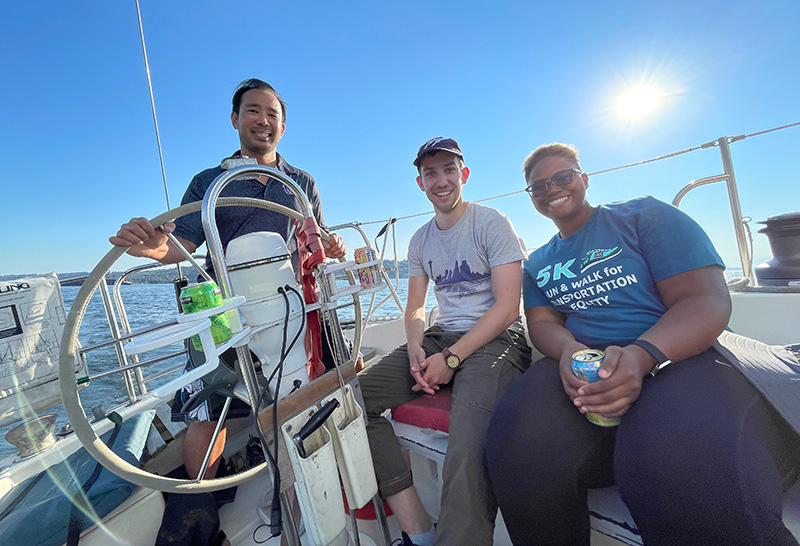
During his internship, Steffen Coenen also socialized with colleagues and had the opportunity to go sailing in the Puget Sound on a colleague’s boat — a “very clean mode of transportation,” he points out!
Where did you intern this past summer? Were you based in Seattle or elsewhere?
I interned at DKS Associates, in downtown Seattle. The company’s corporate headquarters is in Portland, Oregon, and they have a few office locations up and down the west coast and one in Texas.
How did you find out about this internship opportunity?
I was aware of the company through career newsletters and online searches for internship opportunities in transportation. I also got connected to DKS’s electromobility and resiliency lead through a contact in my advisor Professor Don MacKenzie’s lab, the Sustainable Transportation Lab. After connecting with the DKS lead via a virtual informational interview, he advocated to open up a summer internship position on his electromobility team. I applied as soon as the position was posted and got the position.
Was this your first internship? How long was it?
I have worked in different positions as a student or research assistant at my previous university in Germany. In addition, I worked with a young start-up in Germany in the space of energy system optimization for a few months. Because that company was very young, it was a rather different process of “landing” that internship. However, in both cases, I connected with the respective responsible person within my area of interest for an informational interview. The DKS internship lasted three months, from late June to mid-September.
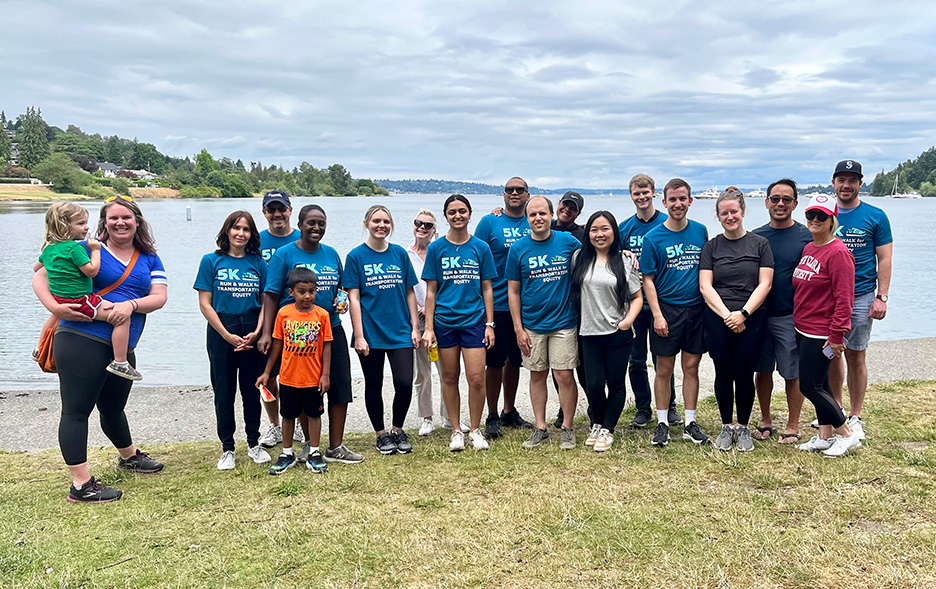
During his internship, Steffen Coenen participated in the company’s “5k Walk & Run for Transportation Equity” in which staff internally collected money to donate to local organizations concerned with equitable access to transportation.
Were you working in an office or field or both?
I worked full-time in the office. However, the work environment was flexible with work-from-home on mostly one, sometimes two days per week. My work did not include field work as my work was largely analysis-based, but I had virtual conversations with DKS’s clients in the Puget Sound Area and California.
What types of projects did you work on during your internship?
The company’s electromobility practice is subdivided into three areas, and I was able to work on projects for all of them. The first area, fleet electrification projects, aimed to help public clients such as cities or counties electrify their public vehicle fleets. This included analyzing their existing fleets, identifying electric replacement vehicles, analyzing charging requirements, and evaluating expected costs. The second area, public EV charging roadmaps, involved developing comprehensive plans for charging infrastructure. This included assessing charging needs, identifying suitable locations for charging stations, and phasing plans over time as EV adoption increases. The third area, transportation decarbonization, focused on broader advising around decarbonizing different transportation systems, such as port operations or emission reduction options in addition to transportation electrification.
Read more
What types of things did you learn?
I learned a lot about the industry of consulting in transportation engineering and planning in general, including project management, budgeting, working with public agencies, meeting (at times, evolving) client needs and sudden or changing deadlines. I also gained knowledge in the electromobility/transportation electrification domain. This will be particularly useful in my future career, both in my research assistantship at the UW as well as upon graduating and working in this space. Finally, I learned more about what other professionals in the transportation engineering space do. This includes people working on design projects such as bus lanes or intersections.
What did you enjoy most about the experience?
I enjoyed combining my passion for addressing climate change through transportation electrification with my skills, which include data analysis, transportation planning, technical writing and presentation. This allowed me to work in a role that facilitates the transition to clean transportation for both public vehicle fleets as well as the general public through the planning of public charging infrastructure and further incentives for electric vehicle adoption.
Do you feel better prepared for your future career?
Yes, I do. I learned a lot about consulting public agencies on transportation-related issues, specifically electromobility. I obtained a thorough understanding of the state of knowledge of public agencies with respect to transportation electrification. I also gained experience talking directly with sustainability managers, fleet operators, and transportation planners. This helped me understand the needs of the public sector as well as the EV and EV charging industry.
How did you first become interested in engineering?
Having studied physics in both a bachelor’s and master’s degree in my home country in Germany, I wanted to shift my career toward being able to help address real-world problems, specifically the mitigation of climate change. With the analytical and quantitative skillset I acquired, I saw myself well positioned for a degree in engineering/planning in a sector of our economy requiring rapid and sustained carbon emission reductions. In addition, I carry the personal conviction that today’s transportation systems need to rapidly change in order to provide equitable and sustainable access to mobility for all.
Any other interesting/relevant details?
I was also able to advance the company’s electromobility practice by developing new tools, databases, and methodologies for their current and future projects. Toward the end of my internship, in a company-wide monthly update delivered by the executive team, I presented on a tool I developed that can significantly streamline the process and steps of the company’s fleet electrification projects. The presentation was to all 150 employees of the company and it allowed me to make others outside of my team aware of my work. It also helped grow my skills in presenting content to people working in related fields, but not directly within transportation electrification.
I invite everyone passionate about humanity’s pressing issues around the climate crisis to enter positions advancing the mitigation of these impacts. The work we all can do matters a lot – and you are likely not able to spend 40 hours per week of your time outside of work on issues that you’re feeling strongly about!
Student internships
Learn more about student internships and watch internship videos.
